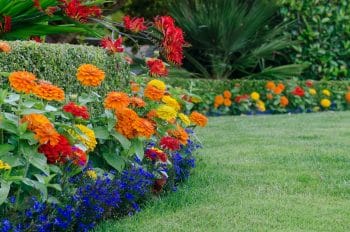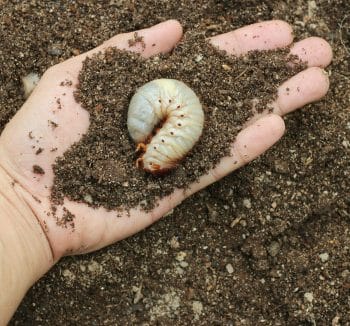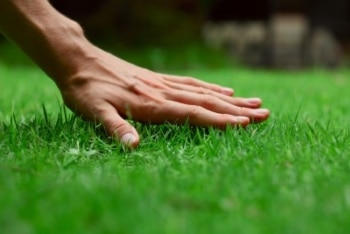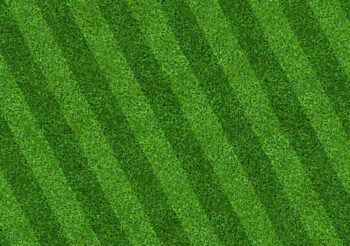 Many things are involved in North Texas lawn care and maintenance, but timing plays the key role. You may wonder what steps you have to take to keep your lawn in a good shape.
Many things are involved in North Texas lawn care and maintenance, but timing plays the key role. You may wonder what steps you have to take to keep your lawn in a good shape.
With a bit of planning and a little hard work, you can take care of your lawn by following these considerations:
- Types of Grass
- When to Mow your Lawn in North Texas
- Proper Watering and Nutrient Care
- How to Improve your Soil
- Insect, Pest, & Disease Control
- Weed Control
Types of Grass
There are several types of grasses in North Texas in Agricultural Zone 8, including Bermuda, St. Augustine, Zoysia, and more. You have to know about your grass type in order to care for it properly.
You can also seek advice from a lawn care professional such as one of our expert at Ryno Lawn Care. Each type of grass has different requirements, as well as different tolerances to things like weather, shade, sun, and water. Understanding which type of grass you have will help you to take care of your lawn in the best way.
When to Mow Your Lawn in North Texas
Moving your grass weekly is necessary for most North Texas grass types, especially during the active growing season. Active growth begins in spring and lasts through late fall. Keeping the following things in mind will help greatly.
How often should you mow your lawn? At the beginning of the spring season, around late February through mid-March, when your lawn grass is not yet growing aggressively, moving can be done about every two weeks.
But later, once spring has fully arrived, you will see that your grass is growing more robustly. At that point, you will likely need to mow your lawn weekly until fall arrives.
Mow your grass at a medium height, taking care not to remove more than 1/3 of the length of the blades. Cutting it too short can make it more susceptible to drought and disease.
For similar reasons, you want to avoid mowing your grass for at least 24 hours after the application of fertilizers and herbicides.
Proper Watering and Nutrient Care
Timing your irrigation schedule is also a key factor for a health lawn. In North Texas, heavy watering is not only wasteful, but it can also promote fungal lawn diseases.
It is recommended to water your grass early in the morning before 9:00 am. This helps reduce evaporation, ensuring that your lawn’s root system absorbs the majority of the water provided. Watering deeply 1-2 times weekly during the spring and summer is enough to keep your lawn healthy.
When it comes to fertilizer, timing is everything! Spring is the best time of year to fertilize your lawn, as this is when the most nutrients will be absorbed. You also want the soil temperature to hit about 55º Fahrenheit.
When shopping for fertilizer, the clay-rich North Texas soil does best with a nitrogen-heavy ratio. Make sure to wear protective clothing while handling and applying the fertilizer.
How to Improve Your Soil
Soil is another factor for the proper growth of plants. Well-drained soil that is rich in organic matter helps greatly. Soil in North Texas contains a lot of clay, as mentioned before, which can cause water logging that may lead to some serious fungal disease. Adding compost in clay-rich soil may improve its soil structure.
Soil conditioner rich in nutrients is known as compost. Best quality compost can be decomposed using domestic as well as commercial food waste. There are three basic things required for composting:
- Browns – dead tree branches, brown dead leaves and twigs.
- Greens – grass trimming, plant trimmings, vegetable waste, fruit waste, and coffee grounds.
- Water – proper amount of water for composting these browns and greens plays vital role.
Compost works best with the use of equal amount of brown and green raw materials. Green provides nutrition, and brown helps to provide a great amount of carbon.
Visit our Soil Rejuvenation service page to learn how Ryno can help make sure your soil is healthy and balanced.
 Insect, Pest, and Disease Control
Insect, Pest, and Disease Control
Your yard is often the place where you spend much of your free time when the weather is nice. Unfortunately, it is also the habitat of insects and microbes that love to live and breed there.
Some insects are environmentally friendly, but many are harmful to our gardens and lawns. Check your plants regularly to recognize and treat insect attacks at early stages to keep plants and gardens healthy. Applying a pesticide or a fungicide- whether organic or manufactured, will be most effective if you catch the damage early.
Types of Pests:
Here are a few common pests to look out for:
- Insects: include aphids, beetles, mosquitoes, fleas, bugs, termites and caterpillars.
- Microbes: bacteria, fungal diseases, and algae.
- Weeds: these include any unwanted, opportunistic plants that take up residence in your yard!
- Mollusks: slugs, shipworms and snails.
- Vertebrates: mice, opossums, rats, birds and snakes.
Weed Control
Weed control is more than just handpicking weeds. Besides, who has time for that? Weeds can take over quickly so don’t wait to weed until they are out of control.
Commit to a quick walk across your yard every other day or so and pluck the weeds that stand out. Select a foliar herbicide that can kill weeds and use it according to the directions.

 Insect, Pest, and Disease Control
Insect, Pest, and Disease Control

